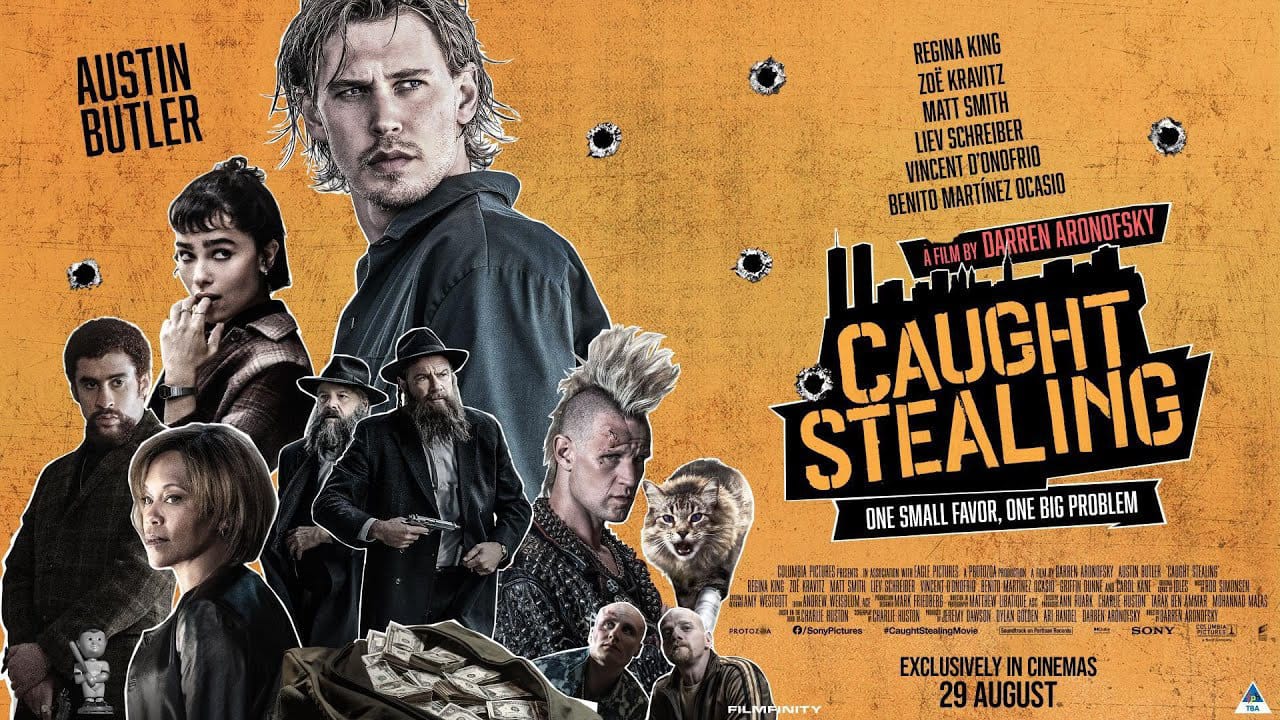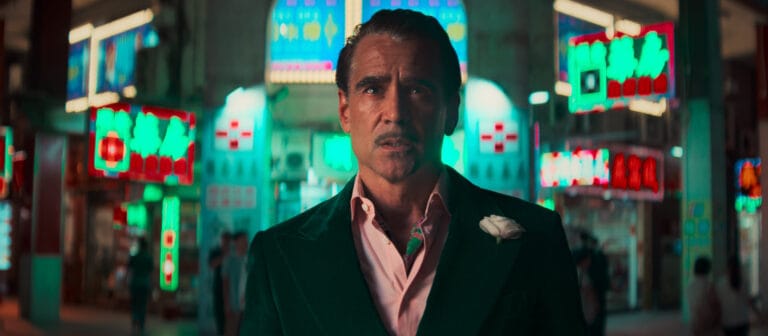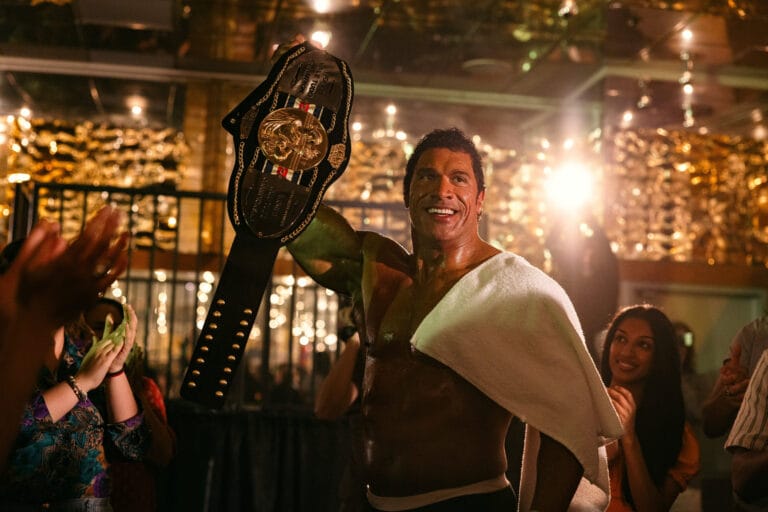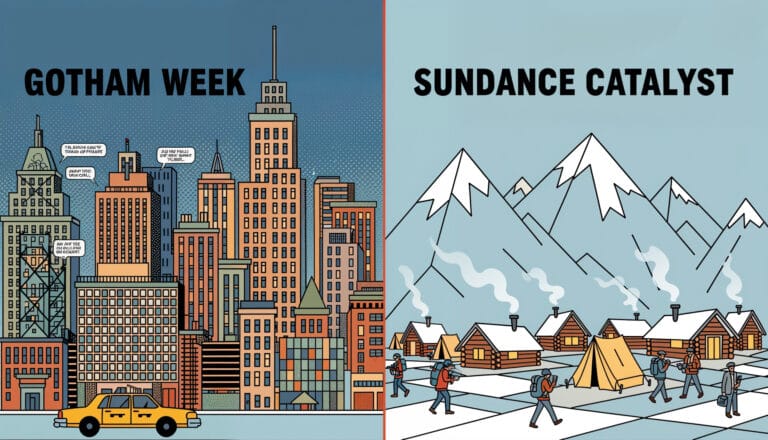Some movies hit you. Others haunt you. But every once in a while, one completely consumes you. That’s what happened with Caught Stealing, Darren Aronofsky’s latest genre-bending film. I went into the screening curious, cautious even, but came out shaken, electrified—and unexpectedly, deeply moved. This review is part technical breakdown, part emotional post-mortem, and part tribute to one of modern cinema’s most uncompromising voices.
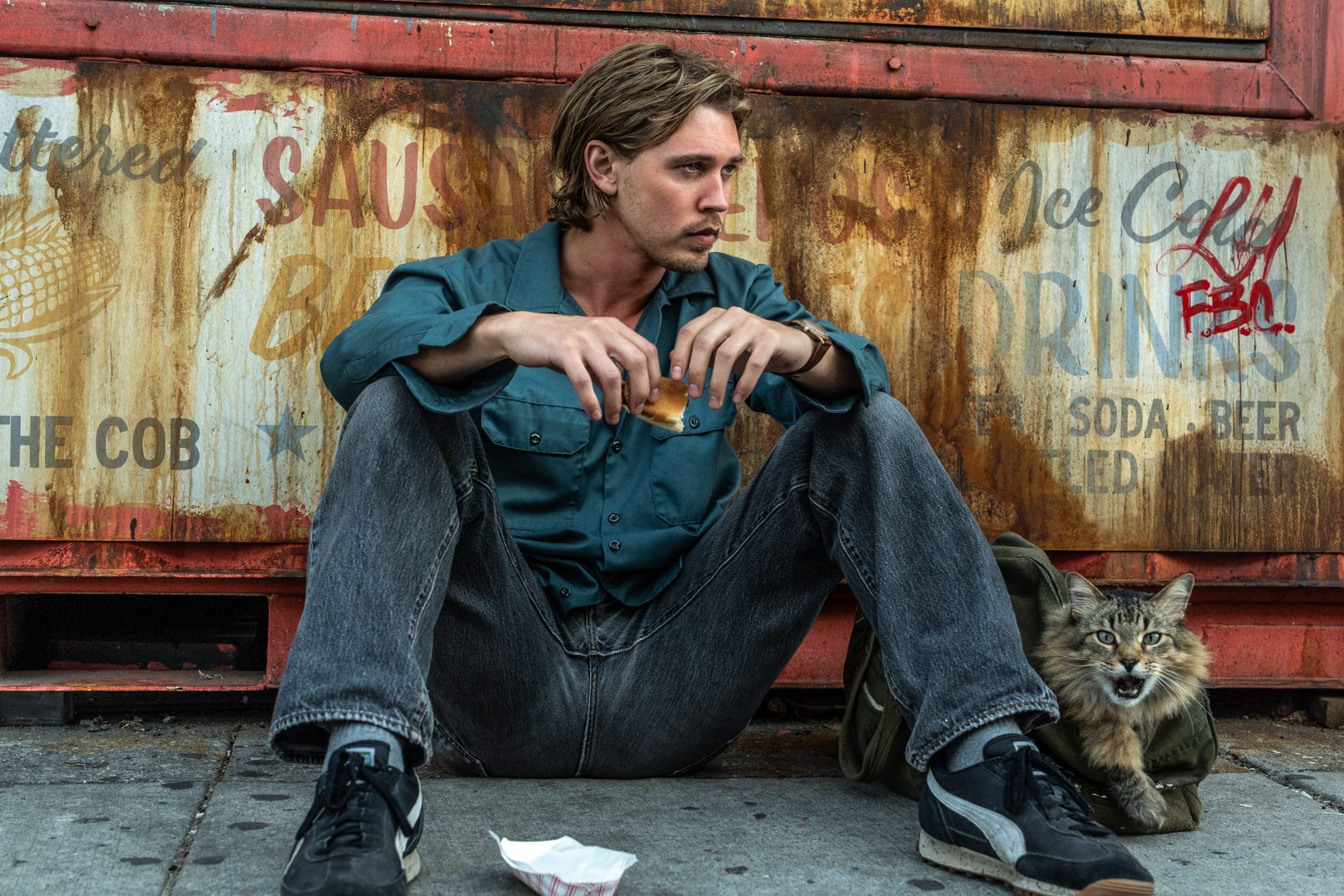
First, a Personal Hook
I’ve seen most of Aronofsky’s work in theaters or on VHS, saw Black Swan during a memorable screening in Brussels, and quite recently The Whale on IMAX in Bangkok. It was in Central World, comfortable seats, in Bangkok, Thailand, that I saw Caught Stealing this time, and I can tell you it was truly something special. Maybe it was the cast (Austin Butler, Zoë Kravitz, Matt Smith, Bad Bunny, one of my favorite rappers, Action Bronson, and even a cameo from a long-time friend of mine, Eddie De Harp, who delivers a one-liner to Austin). Maybe it was the tension—a thriller that kept twisting the knife in all the right ways. Or perhaps it was the fact that I got a sneak peek from Eddie before the film was even released, sharing with me some of his excitement towards this film while never spoiling the story and the tonal chaos Aronofsky had created for this brilliant film. Whatever it was, this film lingers.
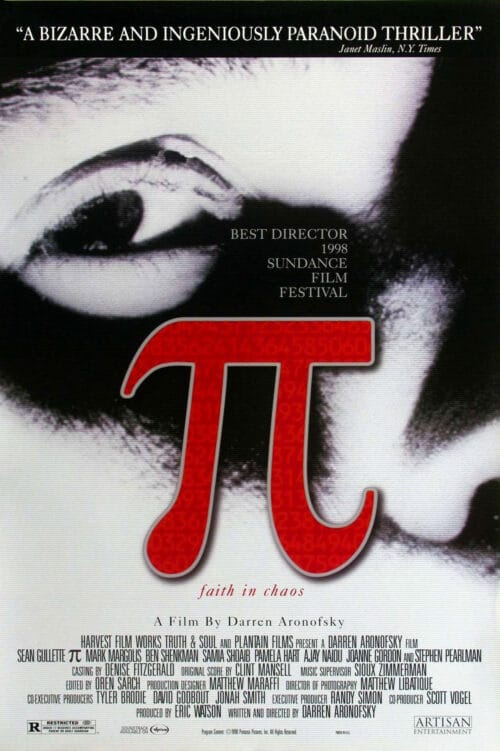
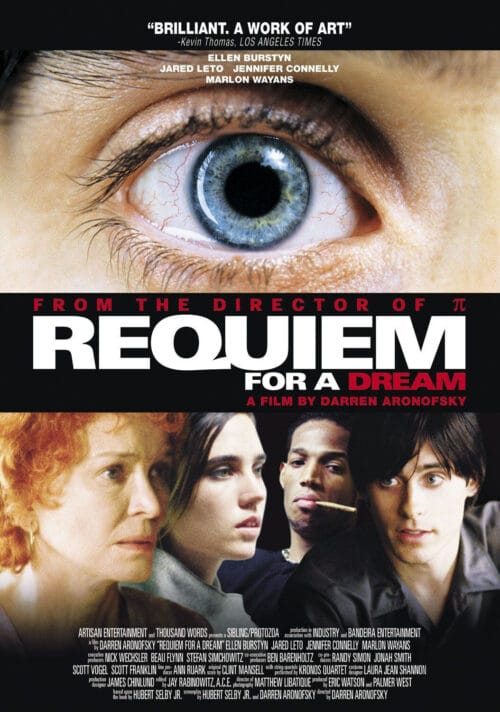
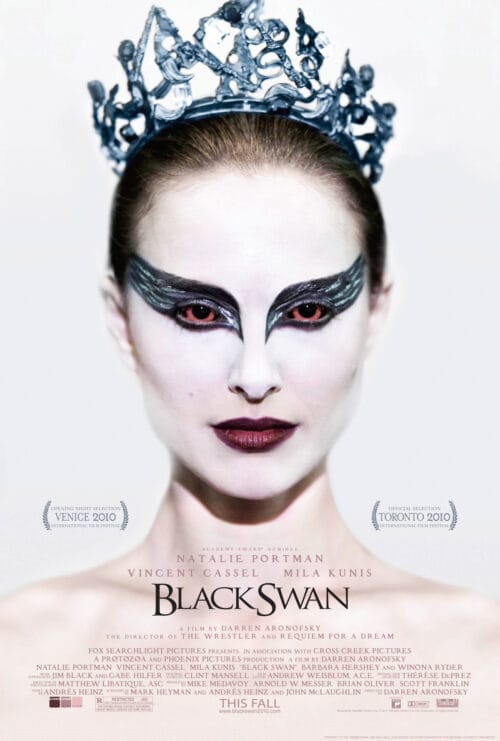
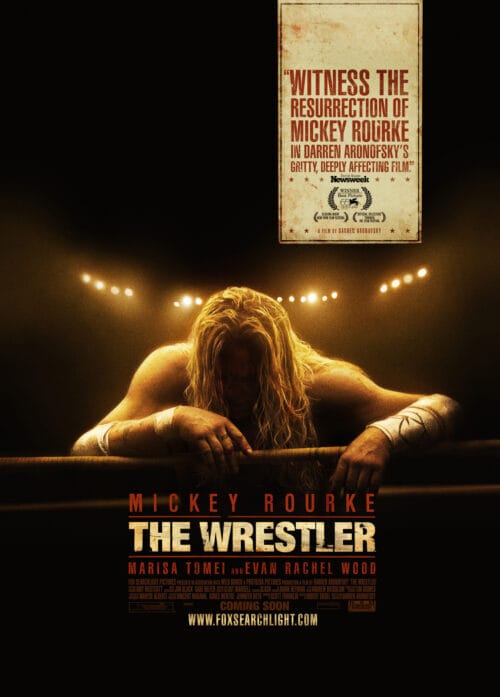
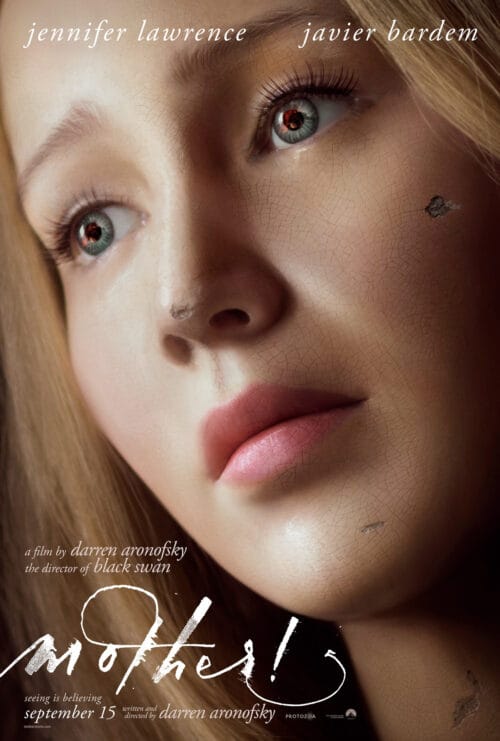
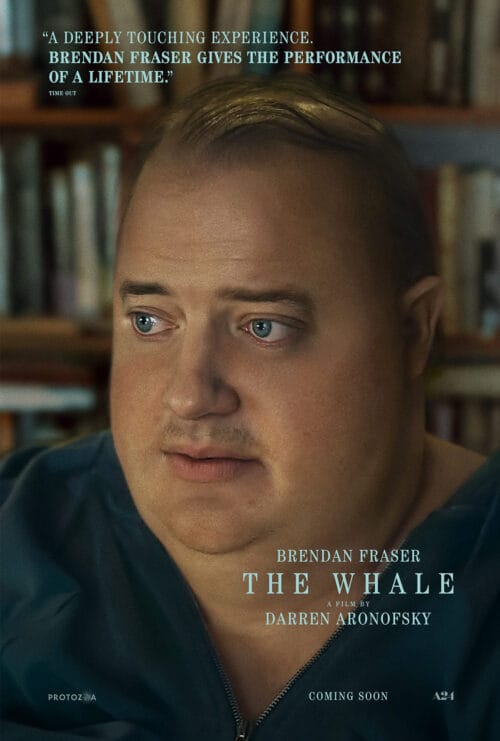
Disclaimer: Independent editorial. Not affiliated with Darren Aronofsky or associated studios. All images © their respective owners.
The Aronofsky Effect: Visceral Obsession on Screen
The DNA of Caught Stealing is unmistakably Aronofsky. It carries his thematic obsession: characters on a collision course with their own self-destruction. Austin Butler plays a washed-up ballplayer pulled into a brutal noir underworld. Every step he takes deeper into the plot feels like a step closer to psychological ruin.
Aronofsky’s usual themes are all here—obsession, sacrifice, delusion—but in Caught Stealing, they’re wrapped in a neo-noir package with the fatalism of The Wrestler and the paranoia of Pi. His characters don’t just want something—they need it in a way that corrupts and reshapes them.
Butler’s character is chasing redemption, Kravitz revenge, and Bad Bunny… well, let’s just say he surprises everyone. And like every great Aronofsky film, no one gets what they want without bleeding for it.
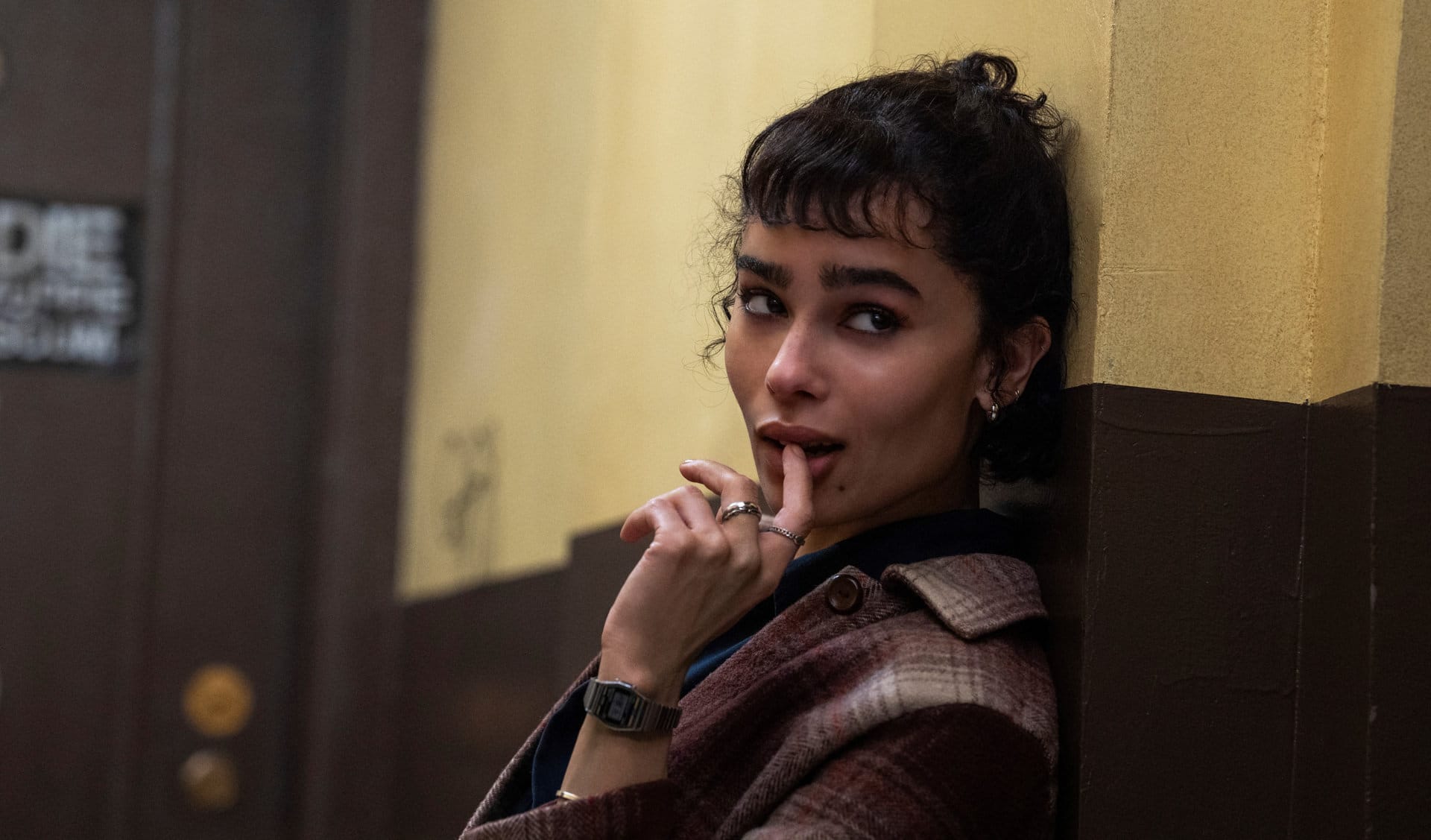
Performance Highlights: Austin Butler, Zoë Kravitz, and Bad Bunny
Let’s talk performances. Austin Butler turns in a ferocious, layered portrayal of a man clinging to hope in a hopeless world. His physicality—slumped shoulders, unsteady gait—mirrors the moral weight he’s dragging behind him. It’s a quieter performance than Elvis, but no less magnetic. Butler’s portrayal here proves he’s not a one-note actor—he’s a star willing to crack himself open.
Zoë Kravitz is a revelation. As a caring girlfriend, she plays her role perfectly, masking layers of concern, strength, and tenderness beneath a detached 90s “cool” attitude. Her chemistry with Butler is electric, especially during a steamy, perfectly timed, and choreographed sequence that sets the tone of their relationship quite early into the story.
And then there’s Bad Bunny. Casting him was bold—but Aronofsky isn’t afraid of bold. Bunny’s turn as a sadistic enforcer feels unhinged yet weirdly poetic. He’s unpredictable, and his presence adds a chaotic pulse that keeps the audience on edge.
Directing Style Breakdown: Tools of the Madman
To truly understand Darren Aronofsky’s magic, let’s talk craft. Few directors utilize the camera as effectively as he does.
- SnorriCam: Used to brilliant effect in previous films, I didn’t see any in Caught Stealing, even during a disorienting alley chase scene. Even without it, the camera works around Butler’s reflected well the the world twists and tensions around him. You don’t watch him panic—you felt it.
- Sharp cuts and Montage Sequences: Rapid-fire edits (close-ups, sound cuts, smash zooms, macros, slow-mos) make a comeback in a brutal crash (Spoiler) involving Butler’s character. It’s Requiem all over again—only sleeker, meaner.
- Extreme Close-Ups: Eyes. Sweat. Glass shattering. Aronofsky turns texture into emotion.
- Sound: Not background. Front and center. He collaborates again with Clint Mansell, and the score is a living pulse that accelerates as the film descends into madness.
These techniques don’t just tell the story. They embed you inside it. In Caught Stealing, even a bar conversation feels like a warzone thanks to the layered sound and camera unease.
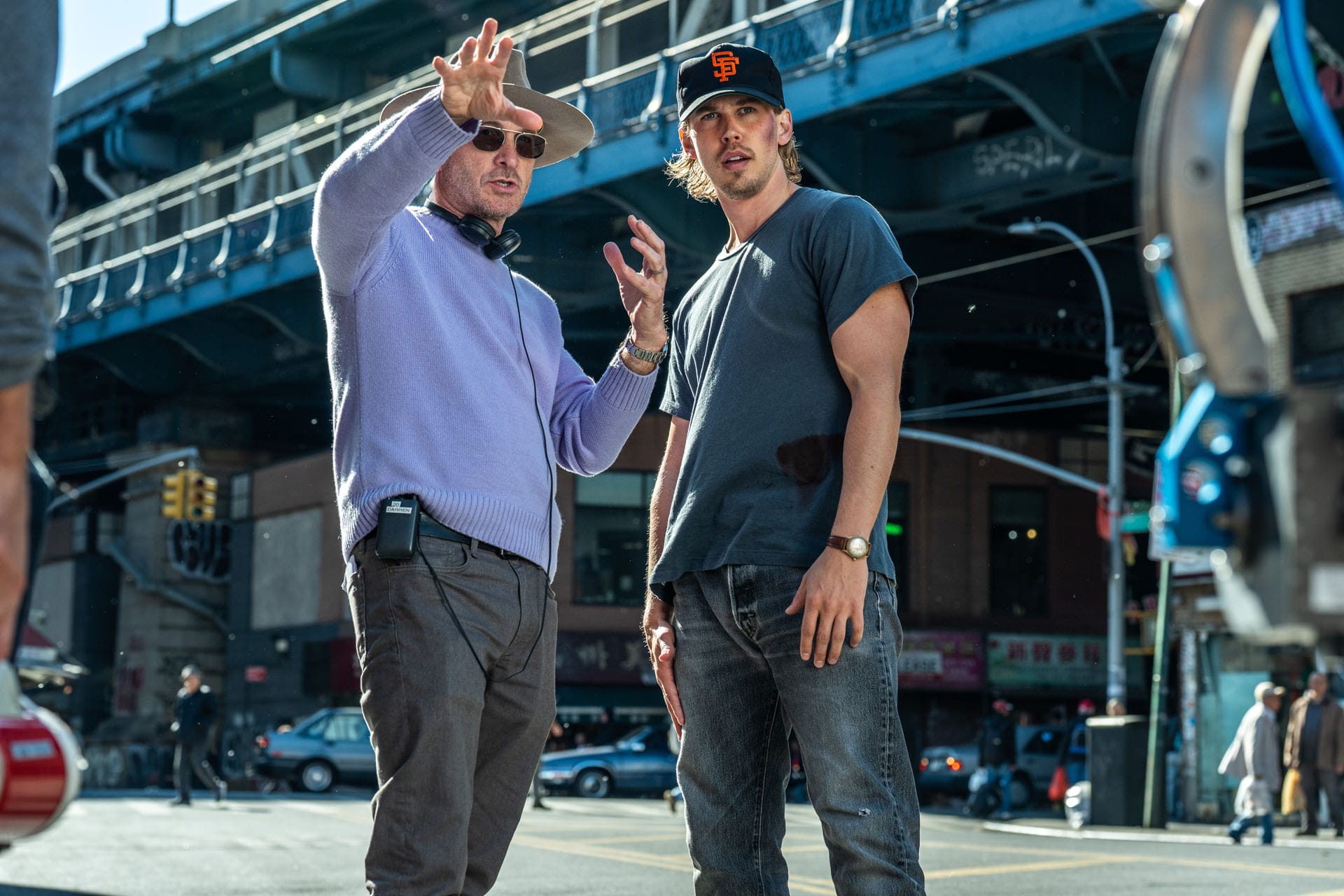
Why This Book, Why Now?
Charlie Huston’s novel Caught Stealing is a gritty, pulpy story filled with violence, humor, and existential dread. On the surface, it’s an odd match for Aronofsky’s cerebral sensibilities—but that’s exactly why it works. Aronofsky doesn’t adapt books verbatim—he adapts their emotion.
He retools Huston’s noir into something more mythic, more internal. The pulp violence remains, but it’s filtered through a psychological lens that makes each punch, each betrayal, feel monumental. Darren Aronofsky is fascinated by stories where people unravel, and Caught Stealing gave him the perfect skeleton to build something uncomfortably intimate and wildly cinematic.
Genre-Bending Like a Pro
Is Caught Stealing a noir? A crime thriller? A psychological descent? Yes. And no. Like mother! or Noah, this film doesn’t care about boundaries. It jumps from pulp tension to surreal horror and back again without losing its grip on the characters. I could feel some influences from Reservoir Dog, Pulp Fiction (Quentin Tarrentino) and even Snatch (Guy Richie)
The versatility is the lesson: Aronofsky’s real genre is obsession. Whatever world he drops you into—Brooklyn’s drug dens, biblical floods, black swan ballets—his obsession is always the same: What will you give up to feel alive again?
Cameos and Conversations: My Insider Glimpse
I first met Eddie De Harp years ago at the legendary Chinese Theater in Los Angeles. It was during the premiere of my own sci-fi project, The Passport. After the screening, Ed came up to me and said—flat out—that he loved it. He was especially drawn to the emotional complexity and the visual ambition of the piece, which meant the world to me coming from someone I knew had worked with some of the best. That moment sparked a friendship that has only deepened over time.
Eddie isn’t just a friend—he’s been a presence in the early world of Darren Aronofsky from the beginning. He played the silent drug dealer’s interpreter in Requiem for a Dream, a scene that’s forever burned into the minds of cinephiles. That moment—haunting, ambiguous, wordless—showed the raw and uncomfortable spaces Aronofsky was willing to explore. It also made Eddie unforgettable.
Requiem for a Dream itself was a turning point for me as a filmmaker. It shattered my understanding of what cinema could do. The hypnotic score by Clint Mansell, the relentless editing, the claustrophobic sound design, and the almost surreal, stylized framing—all of it stayed with me. It didn’t just inspire me, it reshaped me. You don’t walk away from a film like that the same person.
Watching Eddie resurface in Caught Stealing, delivering another sharp, unforgettable moment, felt like a full-circle moment. A reminder of how long we’ve both been at this—and how far cinema can take you when you commit to a vision with everything you’ve got.
One of the most memorable moments for me didn’t come from the film—it came from my friend Eddie. Years ago, he had a small but haunting role in Requiem for a Dream. Now, he pops up in Caught Stealing, playing himself as “Eddie” delivers his line, and disappears. It was surreal, watching a friend become part of a cinematic universe that has shaped my own storytelling ethos.
Eddie even shared some personal insights from set: the craft of those amazing actors, the intensity, and the long and newest friendships made with his collaborators from tomorrow and yesterday combined.
The way I see it, Darren Aronofsky works like a conductor of chaos—always pushing his actors to go further, to experience more discomfort, to be more honest. It’s no wonder the performances feel so raw and authentic.
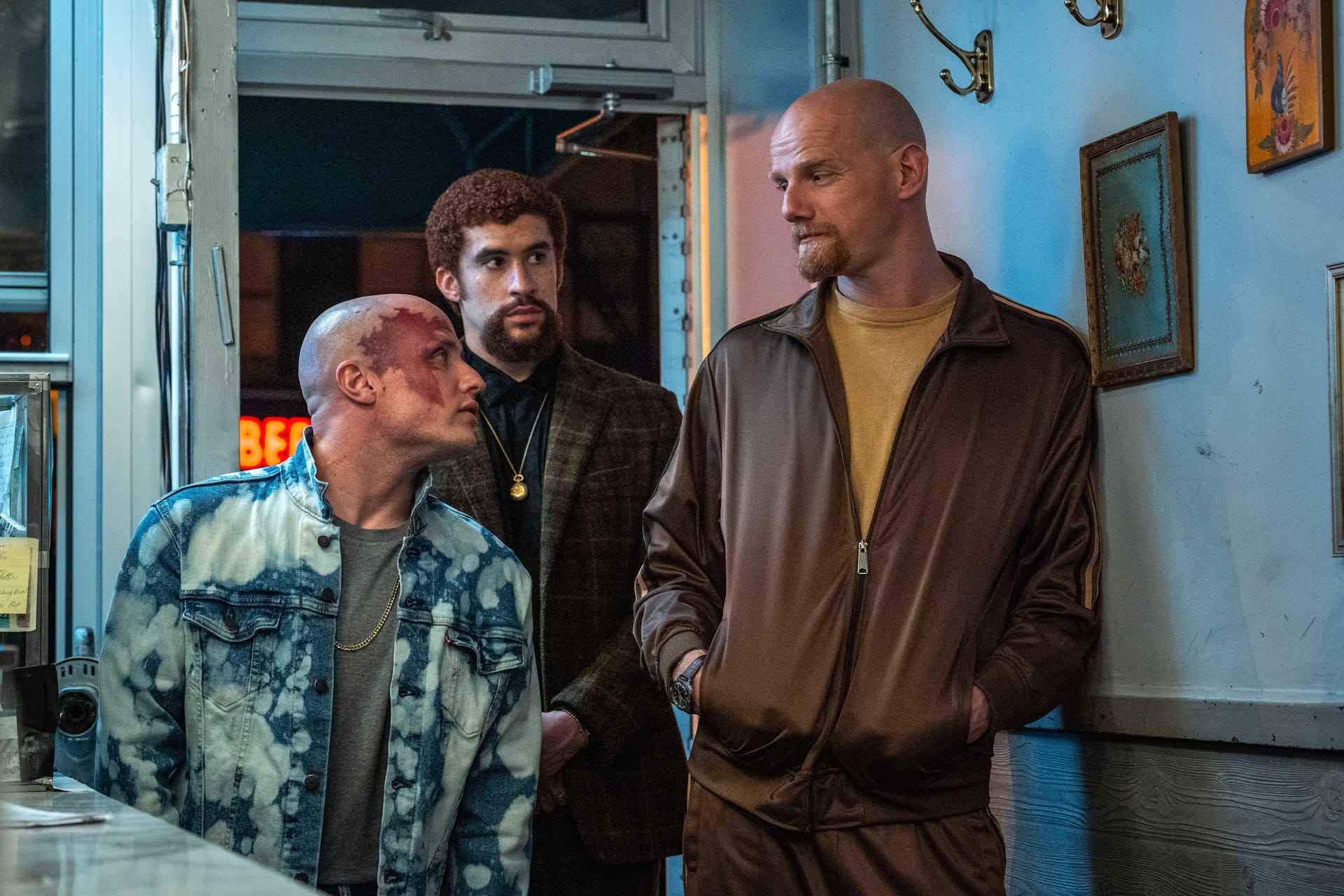
What You Can Steal From Caught Stealing (Without Getting Caught)
Filmmakers, take notes. This isn’t just a movie—it’s a toolkit.
- Establish obsession early: Let your character’s flaw shape the world.
- Make genre secondary: Build from emotional logic, not plot formula.
- Sound as narrative: Don’t just add music—compose with intention.
- Use POV tools: SnorriCam, GoPro, AI animation—get inside the character’s head.
Combine these with tools like Filmmaking AI Workflows or Midjourney Mastery Guide and you can craft worlds that punch through the screen.
Final Thoughts: The Beautiful Brutality of Darren Aronofsky’s Cinema
Caught Stealing is not for you if you crave linear storytelling or comfort. This is ’90s rock and roll cinema—grunge, punk, painted graffiti on New York’s decrepit walls. It’s harsh. Strange. Relentlessly surprising, because it refuses to hold your hand.
If you like your cinema with dirt under the fingernails and blood on the lens, this is another masterstroke by Darren Aronofsky.
Aronofsky reminds us that storytelling doesn’t need to be clean to be profound. Sometimes beauty lives in the bruises. And if you’re a creator—whether you’re shooting traditional film, building worlds in Blender, crafting visuals with Midjourney, or composing soundscapes—the lessons here are gold.
- Obsession makes good drama.
- Subjectivity makes immersive cinema.
- Risk makes unforgettable work.
Use whatever tools you have—AI Render Pro, traditional lenses, broken typewriters—to chase what you are obsessed with.
Internal Links
- Explore our Filmmaking AI Workflows to visualize your next obsessive story.
- Learn prompt techniques in our Midjourney Mastery Guide.
- Start building scenes with emotion and mood using AI Render Pro.
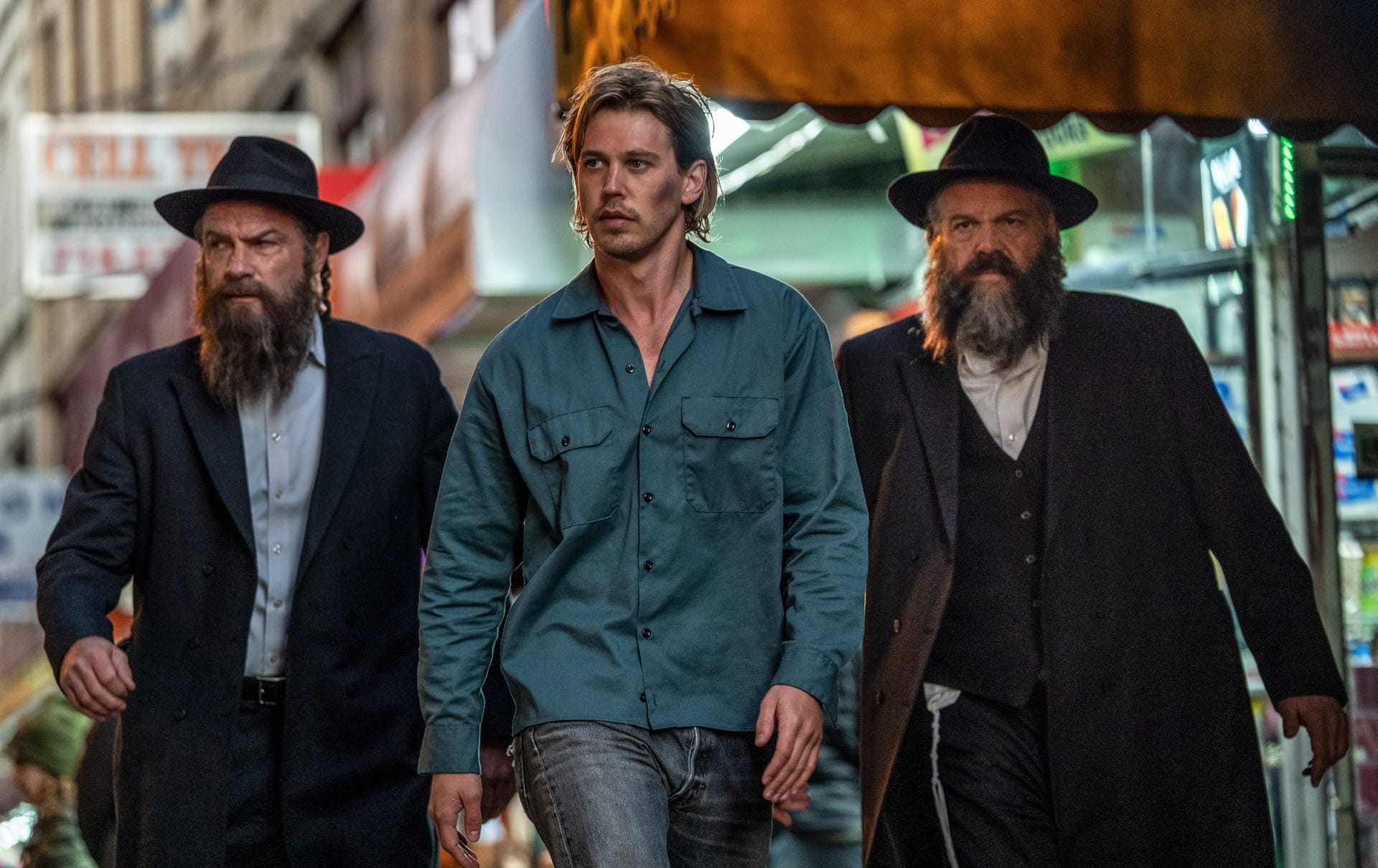
FAQ
What’s different about Caught Stealing from Aronofsky’s past films?
It blends his psychological intensity with a leaner ’90s setup that reminds recall works from the same era, such as Pulp Fiction, featuring genre tropes reimagined through his visceral directing style.
Is Caught Stealing based on a novel?
Yes. It’s adapted from Charlie Huston’s novel of the same name, but Aronofsky’s interpretation adds visual and emotional layers that make it uniquely cinematic.
Where can I find Eddie De Harp’s other film work?
You can check out Eddie De Harp’s IMDb page here to explore more of his appearances and collaborations.
Discover more from Olivier Hero Dressen Blog: Filmmaking & Creative Tech
Subscribe to get the latest posts sent to your email.

